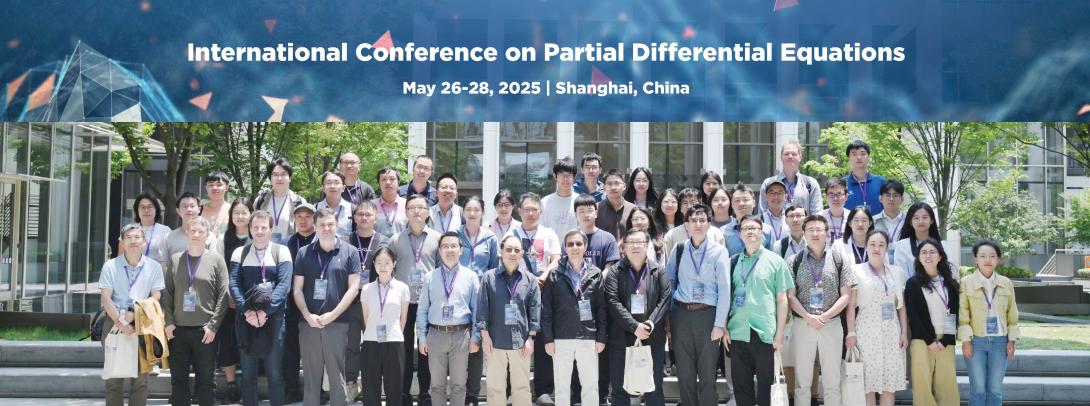The International Conference on Partial Differential Equations was held at NYU Shanghai from May 26 to 28, bringing together over 80 participants from 33 universities to discuss cutting-edge developments in related fields.
Sponsored by the NYU-ECNU Institute of Mathematical Sciences at NYU Shanghai, the event was organized by NYU Shanghai Affiliated Professor of Mathematics and NYU Courant Silver Professor of Mathematics Fanghua Lin, Professor of Practice in Mathematics Liu Yuning, Associate Professor of Mathematics Vahagn Nersesyan, NYU Courant Silver Professor of Mathematics Jalal M. I. Shatah, and East China Normal University Professor of Mathematics and Co-Director of the NYU-ECNU Institute of Mathematical Sciences Zhou Feng.
The conference program featured a wide range of active topics in fluid equations, equations of elliptic and parabolic type arising from phase transition and geometry, and the calculus of variations. “The analysis and control of fluid equations, sharp phase transitions, and the calculus of variations have all undergone very rapid and significant progress in recent years,” said Professor Fanghua Lin.
“Control theory and fluid problems are closely related, and we have several faculty members here doing interesting work in these areas,” said Lin. “We also included variational problems in the discussion—an interdisciplinary topic that connects to geometry, physics, chemistry, and sometimes even biology. It also aligns with the research interests of some of our faculty. When selecting topics for the conference, we aimed to highlight areas that have seen exciting developments and are closely tied to NYU Shanghai’s academic strengths, ensuring local relevance.”
Over the three days, the conference welcomed 15 guest speakers from both local and international institutions, including Fudan University, Shanghai Jiao Tong University, Wuhan University, Purdue University, and the University of Luxembourg. “We designed the conference schedule to be relatively flexible, allowing ample time for questions and discussions,” said Lin. “This creates opportunities for new research directions to emerge from interactions and helps foster future collaborations.”


